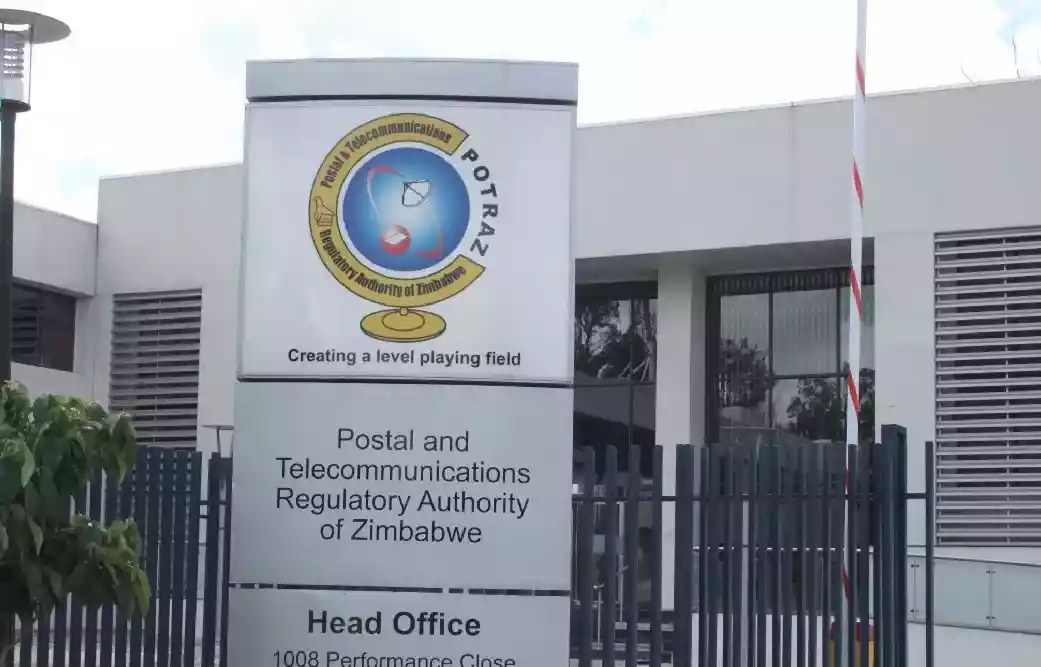
FINANCIAL inclusion is the availability, accessibility, and affordability of formal financial services to all segments of the population, especially women and the rural population (World Bank,2014).
In 2022, Zimbabwe, through the Reserve Bank of Zimbabwe, launched the National Financial Inclusion Strategy in order to promote gender inclusive finance.
Research and evaluation of key interventions undertaken over the past two decades to promote financial inclusion highlight persistent gender gaps in financial inclusion.
However, it is only recently that more analysis of participation and financial exclusion has deliberately sought to explore why women remain excluded and why the benefits of their participation may not be as transformative as expected.
Increasingly, research addresses the complexity of intra-household dynamics and negotiations as well as the role of social norms in shaping differences in access to and use of financial products and services. There is also a growing body of research and evaluation aimed at understanding the specific and gender-differentiated needs of men and women in contexts that vary with their level of institutional development and depth of different financial markets.
Over the past decade, digital platforms have been increasingly advocated by many in the financial inclusion sector as an economically viable solution to provide banking services to the poor.
These platforms also show promise in overcoming some gender-specific access and usage restrictions.
The new data also highlights some positive outcomes related to women's access to digital finance, which appears to help reduce or overcome some of the barriers identified in traditional approaches for financial access.
- Rampaging inflation hits Old Mutual . . . giant slips to $9 billion loss after tax
- Monetary measures spur exchange rate stability: RBZ
- Zim deploys IMF windfall to horticulture
- Banker demands $21m from land developer
Keep Reading
However, there remains a gendered constraint on women’s financial inclusion, which also extends to digital systems and explains persistent gender gaps despite expanding digital technology.
These barriers include women's financial knowledge and access to mobile technology, privacy and transparency issues that make digital payments less secure and more susceptible to women being accepted by other family members.
There may also be difficulties associated with “withdrawal” - that is, their ability to access kiosks and "physical" institutions independently and without supervision.
When mobile banking agents are found in public markets or are disproportionately male, there may also be social and normative constraints that prevent women from banking.
Financial inclusion is one of the most effective factors for any country's economic progress. If there is to be a struggle against gender discrimination in financial inclusion, the gender-gap that prevents women from accessing and profiting from financial opportunities must be identified.
According to 2017 World Bank data, there is a persistent gender difference in the financial system, with 72% of males having access to an account and only 65% of women having access. These gender gap numbers have not altered since 2011.
Global Findex (2018)’s worldwide study conducted in 18 countries revealed that men account for 65% of financial sector customers. This indicates that only 35% of adult females worldwide have access to an account.
Financially excluded women encounter numerous challenges to accessing and using financial products. One of them is a lack of experience and exposure to dealing with the financial sector.
According to the National Financial Education Council (NFED) 2018, women around the world are falling behind in financial literacy. It says on average, women have less financial knowledge than men.
Establishing a baseline that illustrates the gaps and then finding solutions to fill those gaps will thus ensure that non-critical vulnerable segments of the population have better access to information.
A number of factors can be used to explain differences among individuals and various demographic categories with the dominant ones being age, sex, employment status, education, location among others.
There are also suggestions that financial literacy is highly correlated with other factors. Among them, higher education is key.
In essence, financial literacy tends to be higher among adults in the middle of their life cycle, and it is usually lower among young and elderly individuals.
Low income levels have often been associated with low financial literacy levels.
This explains the strong evidence on the gender gap. However, the samples are often restricted to a handful of countries in Europe.
Financial inclusion interventions for women in Africa should tap into the untapped potential of women, who have been excluded from the financial sector, allowing them to develop their full financial capacity and, as a result, develop innovative solutions to Africa's financial problems.
Initiatives aimed at improving women's access to formal financial services have the potential to boost the economy's growth rate.
Despite significant investments in mobile platforms and some notable successes in digitising payments and transfers, women still tend to face barriers to access and use of digital finance and financial services. In a context where knowledge sharing relies on oral traditions, written communication and even computations are limited and potentially gendered.
Research shows that villages in developing countries face profound financial exclusion. These are oral cultures, where financial behaviour is shaped by institutions and word-of-mouth incentives.
Data shows that cash is primarily used as a medium of exchange, rather than a store of value. Men and women interact differently with cash and in transactions involving cash and may have different abilities to recognise the value of paper money.
Financial inclusion is also considered as a key indicator of social development and well-being around the world. Providing inclusive financial services, that is affordable financial services for all, has become a fundamental priority in many countries, including Zimbabwe.
G20 countries have focused on financial inclusion as an enabler of achieving gender equality and other sustainable development goals. Women's empowerment is a radical approach to transforming power relationships in favour of the female gender and is considered essential for global progress.
Therefore, a comprehensive financial model is applied in developing countries to achieve basic training goals.
Despite these developments, gender inequality in access to finance still exists.
In 2017, the gender gap in account ownership remained at 7% globally and 9% in developing countries, highlighting the disparity in opportunities that women face as access to formal financial services persists across regions and time.
Unequal social relationships and unequal opportunities create gender-specific barriers to financial access, which in most cases lead to missed growth opportunities and persistent inequality.
The shift to digital technology during the Covid-19 pandemic has highlighted the deep digital divide and missed opportunities, especially for women and rural people without bank accounts.
Given the increased availability of financial inclusion surveys, empirical analyses that use demand-side survey databases, such as the Global Findex Database, FinScope, and FinAccess surveys to assess demand-side drivers of financial inclusion have been on the rise.
Some of the findings from these studies have shown that access to and use of financial services is not gender-neutral.
There exists disparities between men and women, influenced by both demand-side and supply-side constraints. Some of the non-financial factors include legal and regulatory barriers, socio-cultural and institutional barriers and socio-economic factors.
Tanzania is one of the African countries that have made notable progress in expanding access to formal financial services, increasing from 58% in 2013 to 65% in 2017, largely thanks to mobile money service.
This increase is reflected in both access to and use of formal financial services, with the proportion of rural adults living within five kilometres of a financial access point increasing from 66%,up 78%.
However, despite concerted efforts to improve access to formal financial services, financial inclusion in Tanzania remains not gender neutral.
Women still lag behind in accessing and using formal financial services.
Gender disparities in access to finance undermine the important role women play in poverty reduction and economic development. This is especially the case in Tanzania, where women make up just over 50% of the total population.
While Tanzania's National Financial Inclusion Framework 2018-2022 aimed to increase adult access to financial services to 92% by 2022 (NFIF 2018), challenges remain related to women's access and use of financial services.
Closing the gender gap in financial access may be risky or remain a mirage, in part due to unequal access to and use of digital financial channels, especially in the context of the rapid transition to digital financial services.
There is a need to better understand gender dynamics and barriers to financial access amid the changing dynamics of technological innovation.
In the case of Zimbabwe, it can be argued that, while there is widespread support in Zimbabwe for a commitment to increasing women's access to finance among a wide range of stakeholders supporting financial inclusion, there is no common learning agenda or platform for sharing emerging practices and identifying key levers of change required to close the persistent gender gap.
Furthermore, women confront cash and credit constraints due to a lack of traditional collateral, the presence of discriminatory property rights, and a lack of financial information.
African Development Bank, (2013) noted that lack of these resources makes it difficult for them to scale operations and increase productivity, which is necessary to participate in value chains and supply processes .
Women-led businesses are often small and medium-sized enterprises and are underrepresented in trade associations, limiting their voice and bargaining power.
Zimbabwe is one of the African countries that have made notable progress in the expansion of access to formal financial services.
Nevertheless, a gender gap in financial access persists, despite the growing recognition of the role of financial inclusion in alleviating poverty and promoting inclusive development.
In matters concerning their economic well-being, most women in Zimbabwe are unable to make financial decisions. Some women need their husband’s approval for opening a bank account.
Significantly, husbands want to do all the financial transactions in the home relegating the women to mere observers. This lack of financial autonomy can expose women to financial instability, contributing to financial exclusion. From a cultural perspective, many women are at a disadvantage when it comes to financial access because their husbands may feel that their space may be challenged by women's empowerment, thus the need to maintain a position that allows them to subjugate, oppress, and subvert women's financial autonomy.
It is the patriarchal system that undermines women's financial development efforts. The gender gap in financial inclusion is also attributable to a variety of socio-economic factors including lack of income, limited access to digital financial facilities such as smartphones, and financial literacy, all of which constrain women from accessing and effectively utilising formal financial services.
Digital financial services are expected to continue to play a fundamental role, particularly given the global environment. This results in men using formal banking services more than women, who are more likely to use informal services in Zimbabwe. It can be said that women's access to finance has a very significant impact, even extending to future generations.
If banks and financial services provide products that meet women's needs, more women will have access to financial resources.
There is a need to support champions, who can raise awareness among policymakers, legislators, directors, ministries and stakeholders about the challenges women face and expose the opportunities arising from women's participation in Zimbabwe.
Policymakers, regulators and other stakeholders have an important role to play in supporting the development of programmes that promote women's financial participation in Zimbabwe.
The government should provide basic financial knowledge and training; because most female entrepreneurs do not have the basic financial knowledge to be able to make informed choices about how to use and manage their money now and in the future.
Banks should create low barriers to financial access by encouraging innovation and easing financial regulations and procedures to overcome the barriers women face.
In particular, low-cost products and simple, easy-to-use low-balance accounts will help women without bank accounts access financial services more easily moving towards financial inclusion.
There is an urgent need to develop effective and favourable policies to reduce the problem of financial illiteracy, especially among women.
These include financial education programmes targeting women and developing a national financial education strategy that includes women as a specific target group.
The national financial education strategy should target topics such as financial product awareness, day-to-day financial management, saving and borrowing, and long-term financial planning.
Government can involve other stakeholders such as public authorities, international organisations, microfinance institutions (MFIs) and commercial banking institutions in the implementation of this programme.
- Madzorera-Sibanda is the back office manager for TN Asset Management. — [email protected].











